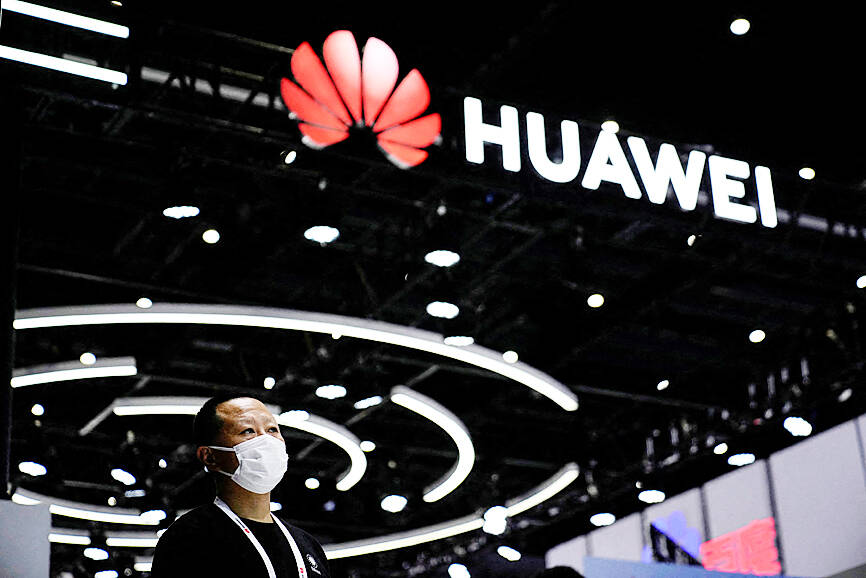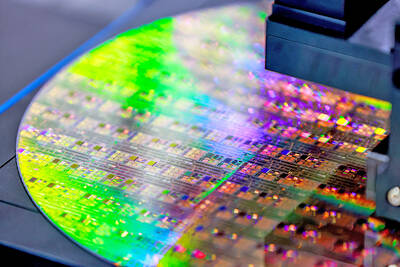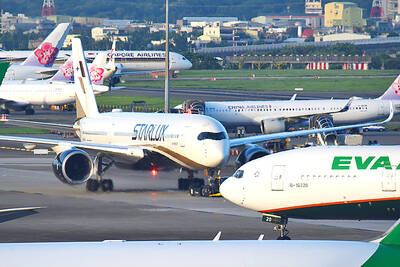Huawei Technologies Co (華為) has secured an extension to a patent licensing deal with Nokia Oyj, suggesting the Chinese company continues to lead in networking technology, despite years of punishing US sanctions.
The announcement indicates appetite for access to Huawei’s next-generation telecom patents remains strong, despite US accusations the Chinese giant poses a threat to national security. Huawei did not disclose details of the deal, saying the terms are confidential.
Huawei is trying to open up new markets and businesses, after US tech export restrictions gutted its smartphone business and curtailed the sale of advanced gear in developed markets. In response, it has begun levying royalties on the world’s biggest smartphone brands, including Apple Inc and Samsung Electronics Co, after first announcing plans to broaden its licensing business from last year.

Photo: Reuters
Huawei has signed more than 20 patent license agreements this year, covering smartphones, connected vehicles, networking and the Internet of Things, Huawei global head of IP Alan Fan said.
“In the automotive industry alone, we reached deals with around 15 car makers for use of our advanced wireless technologies, including well-known names such as Audi, Mercedes Benz, BMW, Porsche, Renault, Suzuki, Lamborghini, Subaru and Bentley,” he said in a prepared statement.
Intellectual property collaborations are among the few areas Huawei can still make significant headway in developed markets like Europe.
The UK has decided to remove the Chinese company from its 5G networks by 2027, though there has been a recent delay in certain specific restrictions.
A senior EU official last month urged countries like Germany to stop using high-risk 5G suppliers, without naming Huawei.
A series of export bans imposed during the administration of former US president Donald Trump barred Huawei from accessing an array of critical US technologies, curtailing its ability to make advanced products from smartphones to servers. That campaign against China’s tech giants expanded during US President Joe Biden’s administration, which also took aim at Chinese-made semiconductors.
Huawei’s net profit fell 40 percent in the first three quarters, although it spent heavily on research to safeguard its lead in 5G networking.
Huawei remains the biggest holder of patents in ultra-fast broadband technology, which is rapidly becoming the mainstream for mobile users around the world.
It is also seeking alternative sources of income by selling artificial intelligence and wireless communications gear to less-traditional customers from automakers to coal mines and industrial parks.

Taiwan’s rapidly aging population is fueling a sharp increase in homes occupied solely by elderly people, a trend that is reshaping the nation’s housing market and social fabric, real-estate brokers said yesterday. About 850,000 residences were occupied by elderly people in the first quarter, including 655,000 that housed only one resident, the Ministry of the Interior said. The figures have nearly doubled from a decade earlier, Great Home Realty Co (大家房屋) said, as people aged 65 and older now make up 20.8 percent of the population. “The so-called silver tsunami represents more than just a demographic shift — it could fundamentally redefine the

Businesses across the global semiconductor supply chain are bracing themselves for disruptions from an escalating trade war, after China imposed curbs on rare earth mineral exports and the US responded with additional tariffs and restrictions on software sales to the Asian nation. China’s restrictions, the most targeted move yet to limit supplies of rare earth materials, represent the first major attempt by Beijing to exercise long-arm jurisdiction over foreign companies to target the semiconductor industry, threatening to stall the chips powering the artificial intelligence (AI) boom. They prompted US President Donald Trump on Friday to announce that he would impose an additional

China Airlines Ltd (CAL, 中華航空) said it expects peak season effects in the fourth quarter to continue to boost demand for passenger flights and cargo services, after reporting its second-highest-ever September sales on Monday. The carrier said it posted NT$15.88 billion (US$517 million) in consolidated sales last month, trailing only September last year’s NT$16.01 billion. Last month, CAL generated NT$8.77 billion from its passenger flights and NT$5.37 billion from cargo services, it said. In the first nine months of this year, the carrier posted NT$154.93 billion in cumulative sales, up 2.62 percent from a year earlier, marking the second-highest level for the January-September

Asian e-commerce giant Shein’s (希音) decision to set up shop in a historic Parisian department store has ruffled feathers in the fashion capital. Anger has been boiling since Shein announced last week that it would open its first permanent physical store next month at BHV Marais, an iconic building that has stood across from Paris City Hall since 1856. The move prompted some French brands to announce they would leave BHV Marais, but the department store had already been losing tenants over late payments. Aime cosmetics line cofounder Mathilde Lacombe, whose brand was among those that decided to leave following